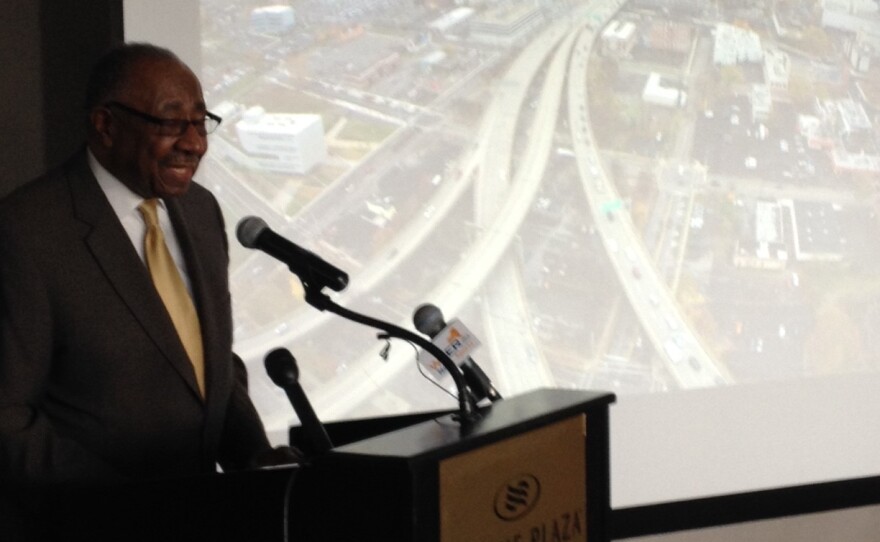The group of property owners, businesses, and residents who want to see the I-81 viaduct torn down revealed computer generated renderings showing what a boulevard may look like. Developer Bob Doucette with Rethink 81 says their analysis of land values in the path and around the freeways shows a street level solution could generate $140 million in property value.
"As we've calculated it, we can return about seven and a half acres of extremely valuable land to the tax rolls and create a new source of tax revenue for this city and for this county which desperately needs it."

Doucette says it amounts to be about $5.3 million. Architect Jason Evans used a series of slides to illustrate the difference before and after the viaduct.
"We're floating above Upstate, right about Harrison street is what's crossing here and looking north still. So, it could become a really vibrant, exciting neighborhood. Again, it's prime real estate right between University Hill and Downtown. You can imagine the shopping and the housing and the life that would occur there."
Evans says there's plenty of land east of the highway ripe for development if the viaduct was torn down. Bob Doucette says the debate needs to shift away from any replacement of the highway with an even wider or higher viaduct to meet current standards. He says the Department of Transportation has said it would require the removal of 25 to 42 buildings.
"As somebody who has spent a lot of their life trying to rebuild the city, it's kind of unfathomable to think they're going to tear so much of it down to put up a new highway which is going to do us more harm than the current one is."
Doucette says a new viaduct would result in the loss of $224 million in property value, and $8.6 million in tax revenue. The groups save81.org wants to keep the viaduct in place to facilitate traffic flow to the suburbs north of the city.











